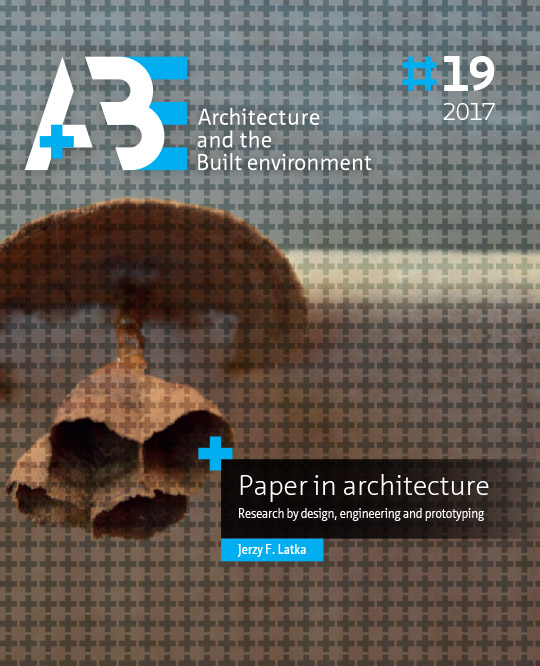Paper and cardboard as sustainable materials
DOI:
https://doi.org/10.7480/abe.2017.19.3762Abstract
Cardboard is generally regarded as an eco-friendly or ‘green’ material. The sustainability of cardboard as a building material can be researched from different points of view, and different aspects should be taken into account. To answer the question as to whether cardboard is a ‘green’ or sustainable material for building applications, we must first define the meaning of these words. Next we need to research the various types of impact cardboard used as a building material may have on the environment.
The word ‘green’, in relation to buildings, is open to many interpretations. In many cases the word ‘green’ is used for marketing purposes. Cardboard products, in particular, can easily be called green because of their eco-friendly appearance. Take, for example, furniture made out of cardboard, which is often described as sustainable. Generally speaking, this type of furniture is very expensive, which means that only wealthy people will be able to afford it, which is in contradiction with one of the main tenets of sustainable development.
As Robert and Brenda Vale, quoted by Wooly et al., stated: ‘[a] green approach to the built environment involves a holistic approach to the design of buildings; that all the resources that go into a building, be they materials, fuels or the contribution of the users, need to be considered if a sustainable architecture is to be produced.’
The phrase ‘sustainable development’ has a much broader interpretation. The author of this dissertation adheres to the narrower definition. Sustainable development in general means that current development meets the present needs without compromising the ability of future generations to meet their own needs. Sustainable development has two highlighted concepts: the concept of the essential needs of the world’s poor, which should be fulfilled as a matter of priority, and the idea of limitations imposed by the state of technology and social organisations on the environment’s ability to meet present and future needs.
Sustainable construction improves the life cycle of building by lengthening the lifespan of building components, increasing the flexibility of the functional and spatial layout of buildings and their potential changes, and promoting the recycling of materials and products after a building has been demolished.
The life cycle of a building consists of four stages: pre-construction (Stage I); construction (Stage II); post-construction (stage III) and demolition (stage IV).
It follows that the entire cycle of materials consists of the following stages: production, construction, usage, demolition, recycling, reusing processes or final disposal.
The total life-cycle energy use of building includes both operating energy and embodied energy. [3] Operating energy includes the energy used to maintain the inside environment through processes like heating, cooling, lighting and operating appliances. With regard to operating energy, materials can be rendered more sustainable by ensuring they have a higher thermal insulation value or greater thermal mass. But the most important factor with regard to operating energy is that the project take into account the local natural conditions and adapt to them.
Higher sustainability can be achieved by reducing the use of raw materials and reducing the loss of resources during the production and construction processes and throughout the life of the building. It can be also improved by recycling of the used materials, in such a way that recycled materials can be used again at their original level of quality.
Life Cycle Assessment is a method used to measure and evaluate the environmental impact of product systems or activities by describing and assessing the energy and materials used and released into the environment over the course of a building’s life cycle, from cradle to grave.
The assessment of the environmental performance of cardboard as a building material is based on the following environmental categories proposed by M. Vaccari in her dissertation.
<ol>
Resources: extraction of raw materials, water and minerals
Recyclability of the material
Energy use in production, embodied energy and operating energy
Durability and maintenance
Global warming, climate change and emissions to soil, air and water.
</ol>

